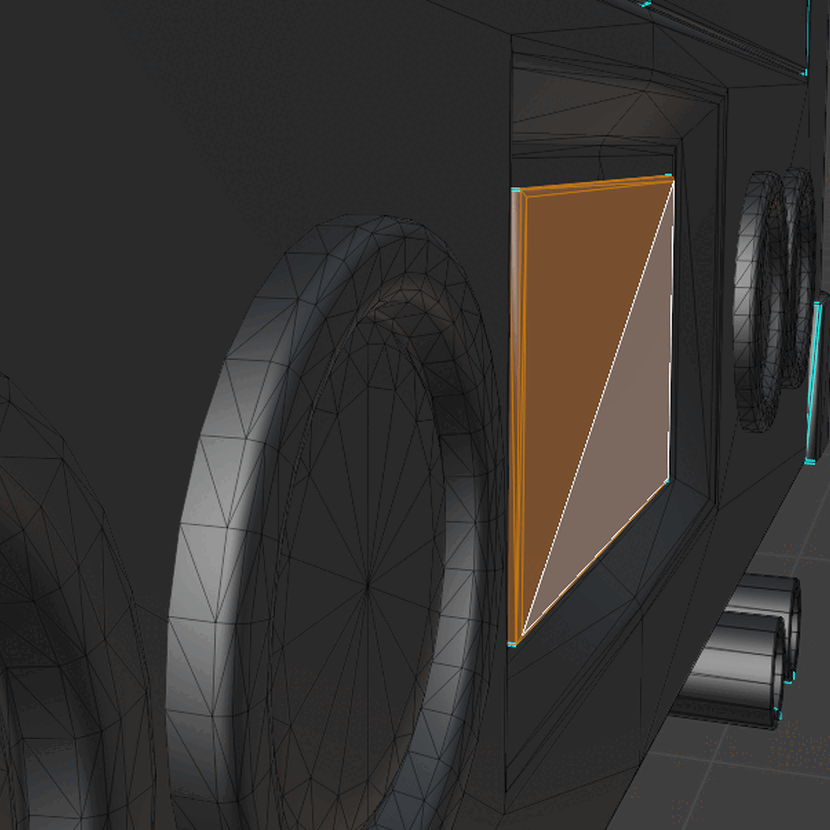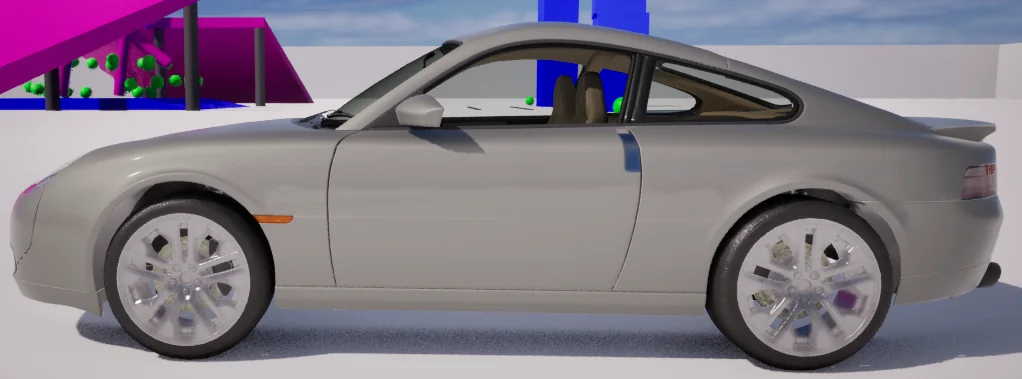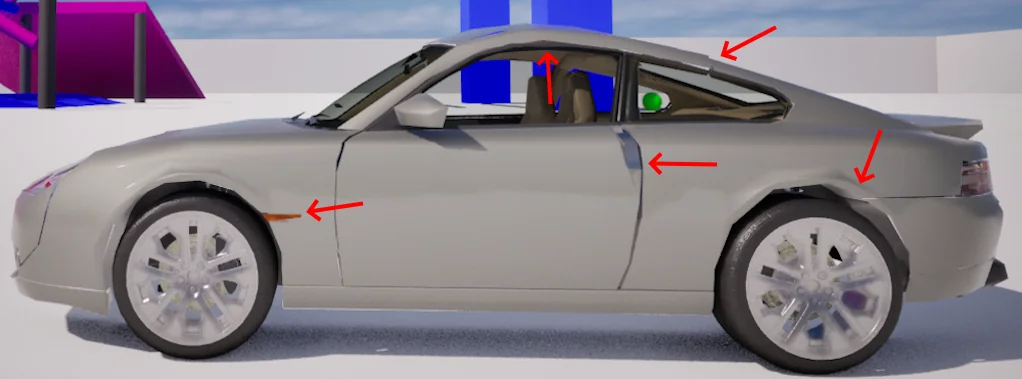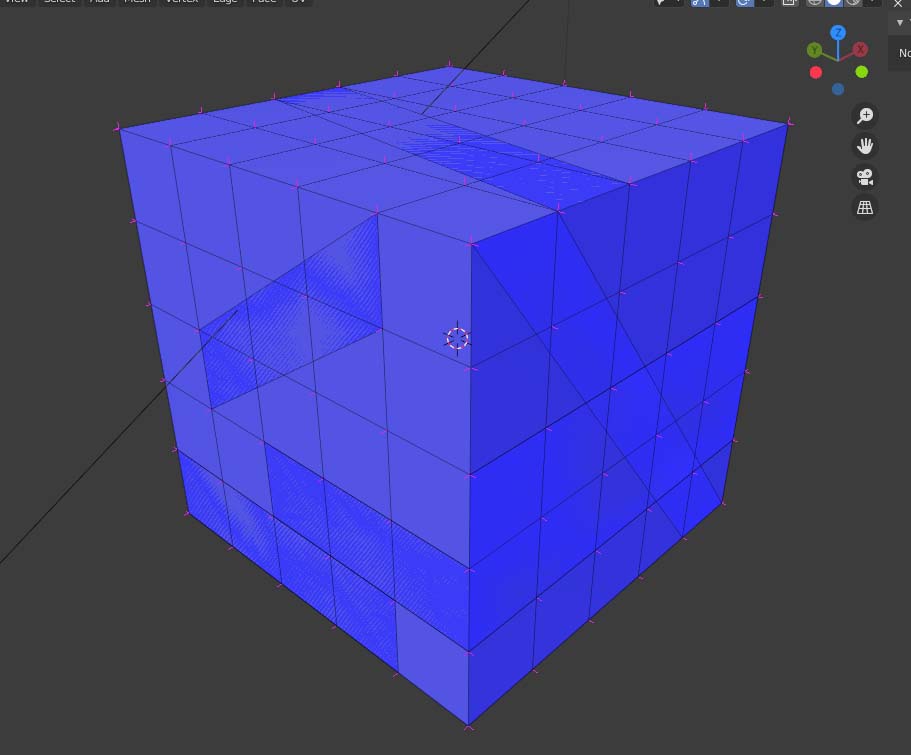Static Mesh
When it comes to the static mesh that's used for the Deformable Mesh, the following aspects should be taken into account:
- Your static mesh SHOULD NOT have overlapping vertices / faces / edges!
- Your static mesh SHOULD NOT consist of many separate objects! The static mesh SHOULD be joint together for good deformation!
Example: Not connected parts

The numberplate is being "pushed into" the back of this vehicle. Why? Because it's not connected to the back of the vehicle:

- Your static mesh NEEDS vertices wherever deformation should take place! No / too less vertices = No / bad deformation.
Example: Not enough vertices

That part of the mesh only has 4 vertices and that is not enough for any deformation!
- When using attachments make sure your static meshes are NOT ONE SIDED (= only visible from one side and invisible / transparent from the other side), in the event that the static mesh falls off you can see both sides.
Example: One sided mesh

- Do NOT use nanite meshes when creating a Deformable Mesh. The static meshes used for the Deformable Meshes should not have nanite enabled, because they may end up looking like they use a wrong (bad) LOD when used in our Deformable Mesh Component. We do not support nanite.
Example: Nanite Mesh

Above: Nanite disabled, Below: Nanite enabled


